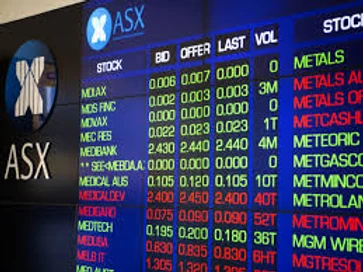The journey to an ASX listing

Although we didn’t have a clear time-frame in mind until much later, Rob and I (and our Board members at the time) felt from early on that an Initial Public Offering (IPO) was achievable for Aconex. We had raised several rounds of capital totalling nearly $30m from Australian investors, from our founding in 2000 to 2007. And, in 2008, we secured a $60m investment from Francisco Partners, including a partial secondary sell down for early shareholders which, among other things, set us up to enter the US market.
One of the drivers of our IPO in late 2014 was to provide liquidity to our early investors. While still overwhelmingly supportive, the desire to lock in some of the growth in their investments after 10 to 15 years was understandable. In Francisco Partners we also had a significant (but minority) investor that was keen to realise a return after six years.
I’ll share thoughts below on when and where to list, based on my experience with Aconex. There is no ‘right’ answer to either question, but there are certainly factors that can help frame the decision.
First, though, I think it’s useful to look at the benefits and the downsides of a public listing. It is just one of the options available to you and your Board. In my experience, it can be exciting, validating and challenging all at once. Like any decision affecting shareholders, it needs to be judged on its merits.
Benefits of being a listed company
A successful listing can benefit not just shareholders, but the business as a whole, customers and employees.
Shareholders get liquidity.
However, it is important to note that this liquidity is not readily available to insiders, including senior management and the board, as explained below.
The business can access capital more easily.
At Aconex, this process worked well for us when the opportunity arose to acquire Conject, the European market leader in our space. As a public company, it took us just a few weeks to raise $120m, including a single day in the market speaking to investors. Incredibly, we had around $800m of investment commitments chasing the $120m we required. When you have momentum in your stock, raising capital as a public company can be extremely efficient.
Higher valuations are possible.
High multiples in the public markets have driven high valuations of privately held technology businesses. So, at the moment, it is not clear that listed companies are actually enjoying a premium to private companies.
A public listing drives interest and confidence.
Now less opaque, employee share plans (ESPs) are valued more highly.
With full liquidity and real-time pricing, staff can put a concrete value on their share plans. I have seen firsthand that the ESP of a private company can have significant value, with a real retention benefit among early employees and ‘believers’. But as you grow it helps to have a public share price when you are trying to attract talent from a wider pool.
Listing has its downsides
Despite the benefits of being public, getting to IPO stage is neither easy nor cheap. In addition, the new status can start to limit the freedom of decision-making that you enjoyed when privately held.
The time and effort needed to IPO are considerable.
Recurring costs need to be factored in.
Operating as a listed company brings higher compliance and disclosure requirements. You will certainly need an investor relations function (this was a full-time role at Aconex) and a company secretary. We also added at least two more people to our finance team to manage compliance. As CEO I was spending about a month a year on investor engagement – including roadshows and preparing for results announcements. The CFO and company secretary spent even more time on market-related activities.
When you factor in ASX fees, audit costs, directors’ and officers’ liability insurance, increased directors’ fees plus the new IR and compliance roles, the annual recurring cost of listing is at least $1m.
Long term investment decisions can become difficult.
Having a transparent share price that moves every day can also become a distraction, with the risk that management or board decisions are unduly influenced by the anticipated short-term impact on the stock.
Liquidity for senior management and the board can be severely limited.
Compared to the US markets, it is difficult for insiders such as the CEO, key managers and the board to sell shares on the ASX. Blackout periods of around six weeks come into effect before each reporting date, and due to insider knowledge on strategic activities such as M&A it is almost impossible for management to trade stock outside of specific windows immediately after reporting. As an example, at Aconex, there were effectively only two blocks of two weeks per year when the board and management were able to trade.
Even within these trading windows, it can be difficult to sell without driving down the share price. Share sales by senior managers or board members risk being seen as a signal on how the company is doing or can be used by short sellers to support their negative outlook. I look forward to providing my thoughts on certain short selling approaches in a future post!
In my view, selling by insiders is better handled on US exchanges than on the ASX. I have commented on these issues in the following AFR articles: More regulatory oversight needed for short traders: Aconex’s Leigh Jasper and End ‘smoke signals’ to attract more tech founders to ASX.
Size matters: the risk of being too small
For small companies, the cost and downsides of being listed generally outweigh the benefits. A larger company can spread those costs across a higher revenue base and will often have existing systems and processes to manage compliance. Larger companies also tend to receive better analyst coverage and more attention from fund managers and other investors.
While there are examples of companies that successfully listed when they were small, many more have flamed out or simply faded away. It is hard to raise money when your company gets into a death spiral at the bottom of the ASX. The successful companies are the ones we remember, but this does not give a true reflection of the risks of listing when you are too small.
So, when is the right size to consider a listing? There is no absolute number but, in my view, you need to have a market cap of at least a couple of hundred million dollars to make it worthwhile on the ASX. For US markets, the minimum is more like $1 billion.
ASX or elsewhere?
While we considered the possibility of listing Aconex in the US and ran the business in line with US accounting and compliance standards, we ultimately chose to list in Australia. The perception of the Australian Stock Exchange (ASX) as a market for technology listings has improved dramatically over the last ten years. Whereas tech stocks traditionally traded at a discount on the ASX compared to the US markets, valuation multiples are now at par or even higher.
The ASX clearly is not as deep a capital pool as the US markets and there is the inability of insiders to easily sell stock (as highlighted above), however the Australian market offers other benefits over the US. The costs of an IPO are much lower, compliance requirements are a little lighter and reporting is every six months rather than quarterly. Companies can list at a lower market cap and the hurdle for entering the indices (ASX 200 or 300) is much lower than for their US counterparts.
There is no doubt that the ASX listing of Aconex was a significant milestone on our journey. It rewarded shareholders and set us up for the next stage of organic and M&A growth that ultimately led to a successful sale to Oracle. The IPO path will not be right for every business, but it is certainly worthy of consideration as one of your options.
